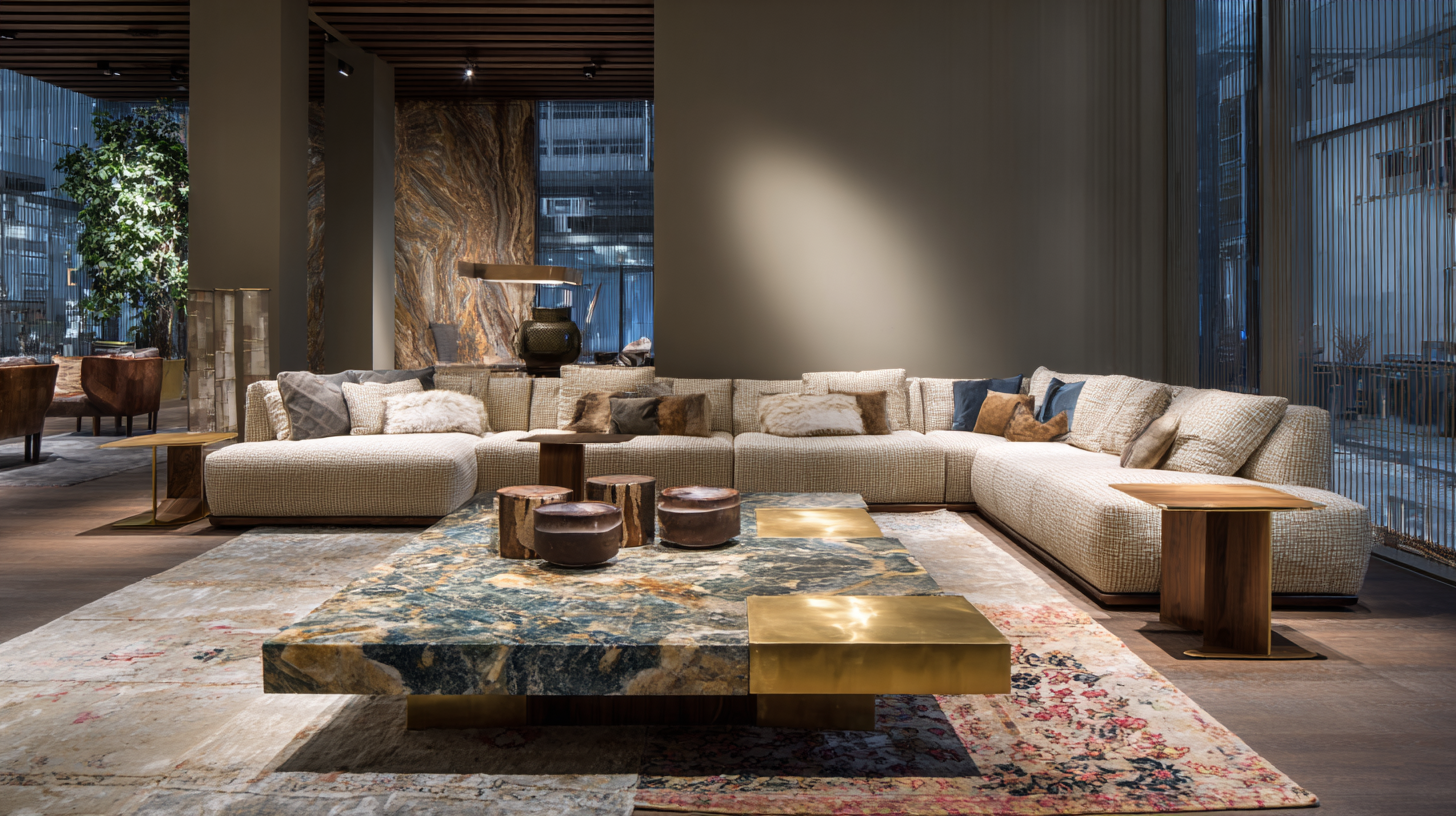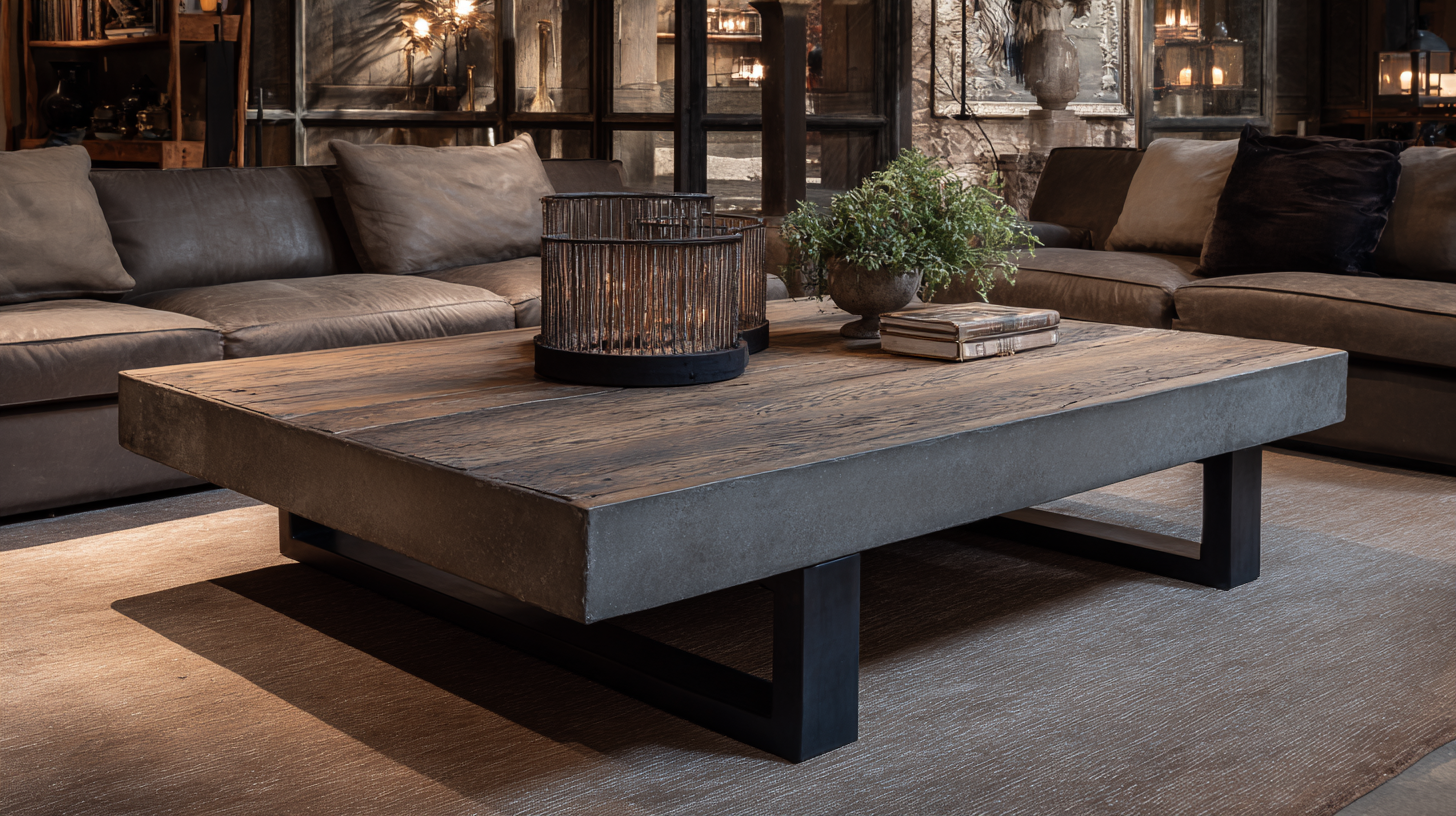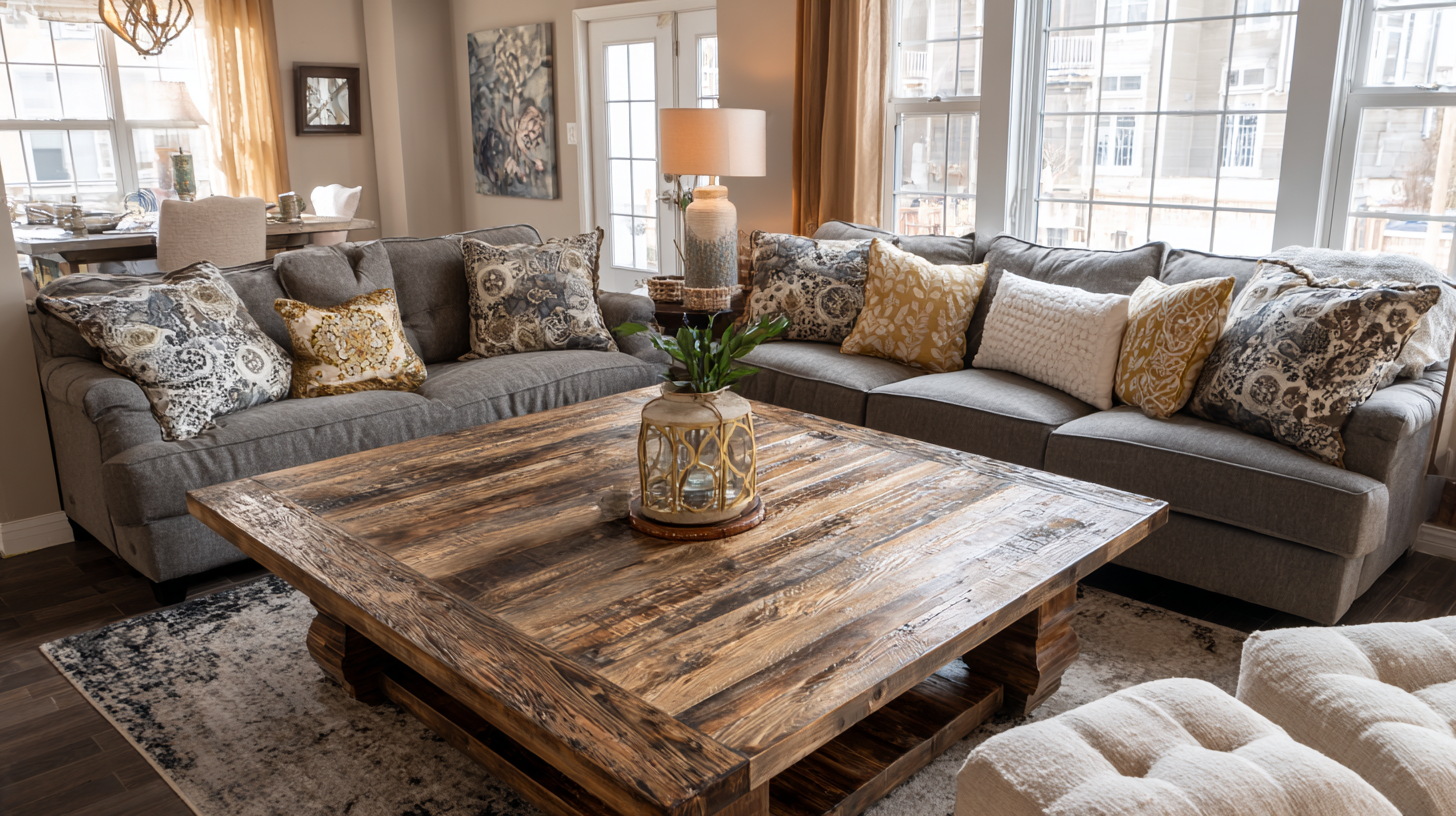Exploring the Characteristics and Applications of Best Large Living Room Tables for Global Buyers
As we delve into the ever-evolving world of interior design, the "large living room table" stands out as a pivotal piece of furniture that combines functionality with aesthetic appeal. According to a recent report by Grand View Research, the global furniture market is expected to reach USD 650 billion by 2027, with a significant segment devoted to living room furniture, where tables play a crucial role. The rise in urban living spaces and the growing emphasis on multifunctional furniture have led consumers to seek larger tables that can accommodate their diverse needs, from family gatherings to social events.

This blog aims to explore the characteristics and applications of the best large living room tables available in the market, providing insights that cater to the preferences of global buyers looking for both style and utility in their living spaces.
Understanding Key Dimensions and Materials for Large Living Room Tables
When it comes to selecting the perfect large living room table, understanding key dimensions and materials is crucial for creating both functionality and aesthetics in your space.
According to a recent report by IBISWorld, the average size of a large living room table typically falls between
60 to 80 inches in length, catering to various design layouts and user preferences.
A well-proportioned table can enhance social interactions, providing ample surface area for both everyday use and entertaining guests.
Moreover, the choice of materials plays an equally significant role in the table's durability and style.
Common materials include solid wood, glass, and metal, each offering unique benefits.
Wood, for instance, adds warmth and a timeless appeal, while glass can create an illusion of more space.
The Material Research Institute states that solid wood tables can last over
20 years with proper care, making them a worthwhile investment for discerning buyers.
Tip: Always consider the table height in relation to your seating.
A standard table height ranges from
28 to 30 inches, which works well with most sofa and chair heights.
Additionally, opting for a table with storage solutions can enhance organization and functionality in your living space.

Essential Technical Specifications to Consider When Choosing a Table
When choosing the best large living room tables, it's crucial to consider essential technical specifications that ensure functionality and harmony with your space. First, focus on dimensions that suit your room layout. A table that is too large can overwhelm a small space, while a tiny table may look lost in a spacious area. Measure your available area, factoring in pathways and other furniture to create a balanced environment. Additionally, consider the height of the table in relation to your seating.
Standard coffee tables typically stand around 16 to 18 inches tall, while dining tables are usually 28 to 30 inches. Matching the table's height to your seating ensures comfort during use.
Material is another key specification to weigh in your decision. Popular options include wood, glass, and metal, each bringing a unique aesthetic and durability level. Wooden tables offer warmth and a classic feel but require maintenance to keep their finish. Glass tables are great for smaller areas due to their light-reflecting properties, making spaces feel more open. Metal tables provide modern flair and are incredibly durable but can be colder in appearance.
No matter your choice, select a table that complements your living room's overall style and withstands daily use, making it both a practical and stylish addition to your home.
Design Styles That Complement Large Living Room Spaces
When designing large living room spaces, choosing the right table can significantly enhance the overall aesthetic. One popular option is the contemporary coffee table, which often features clean lines and minimalist designs. This style complements spacious interiors by creating an airy feel without overwhelming the space. Materials such as glass or light-colored wood work well, providing a sleek look that reflects modern elegance.
Tip: For a harmonious look, consider pairing your large coffee table with accent pieces that share similar color tones or materials. Decorative trays, books, and fresh flowers can elevate the table while maintaining the design coherence of the room.
Another delightful choice is an artisanal wooden table, which introduces a warm, organic touch to the space. This style often showcases unique grains and textures, making each piece one-of-a-kind. Combine it with plush seating and layered textiles to create a cozy atmosphere that invites conversation and relaxation.
Tip: Incorporate lighting elements such as a statement chandelier or side lamps to draw attention to the table. This not only enhances its presence but also adds functional lighting for activities like reading or playing games in your living room.
How to Choose the Right Color and Finish for Your Living Room Table
Choosing the right color and finish for your living room table is essential in creating a cohesive and inviting space. When selecting a color, consider the overall palette of your living room. If you have a neutral color scheme with soft tones, a table in a darker shade can create a striking focal point. Conversely, if your decor features bold, vibrant colors, opting for a light or natural wood finish can help balance the visual weight and maintain harmony within the space.
Finish is another crucial aspect to consider, as it affects not only the appearance but also the durability of the table. Matte finishes are excellent for a contemporary look and tend to hide scratches better, making them great for high-traffic areas. On the other hand, glossy finishes can add a touch of elegance and sophistication. Regardless of the finish, ensure it complements other furnishings like sofas and shelves, enhancing the overall aesthetic while prioritizing functionality and ease of maintenance.

Practical Tips for Arranging and Styling Your Living Room Table
Arranging and styling your living room table can significantly enhance the overall ambiance of your home. According to a recent report by the National Association of Home Builders, 56% of homeowners consider a well-decorated living room as a key indicator of a welcoming space. To create an inviting atmosphere, consider incorporating various heights and textures. For instance, using a combination of stacked books, elegant vases, and seasonal decorations can add depth and interest.
When selecting decor, remember the 60-30-10 rule for color balance: 60% should be your dominant color (such as your couch or walls), 30% your secondary color (like decorative pillows), and 10% an accent color (which can be introduced through table accessories). This principle ensures a harmonious yet dynamic space. Additionally, keeping functionality in mind, ensure there's ample space for drinks and snacks by avoiding overcrowding.
Finally, consider the size and scale of your living room table. A recent survey by the Furniture Today publication found that over 70% of consumers prefer large tables that can accommodate both decoration and utility. A round table can facilitate conversation, while an elongated one offers display opportunities on either end. Choose wisely to ensure that your living space remains both stylish and practical.
